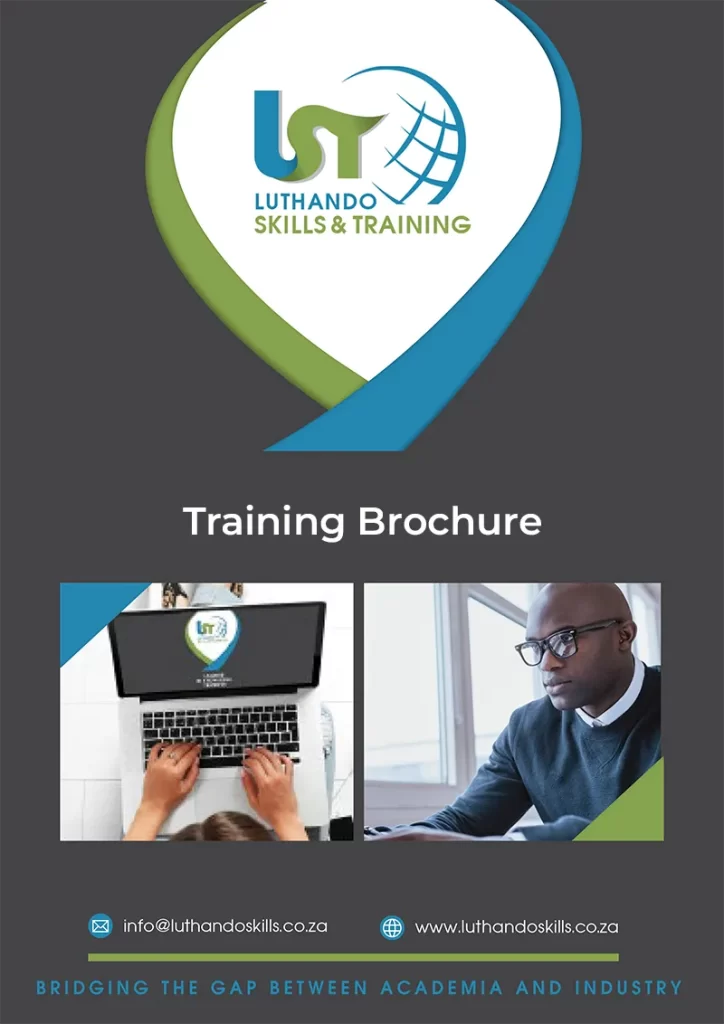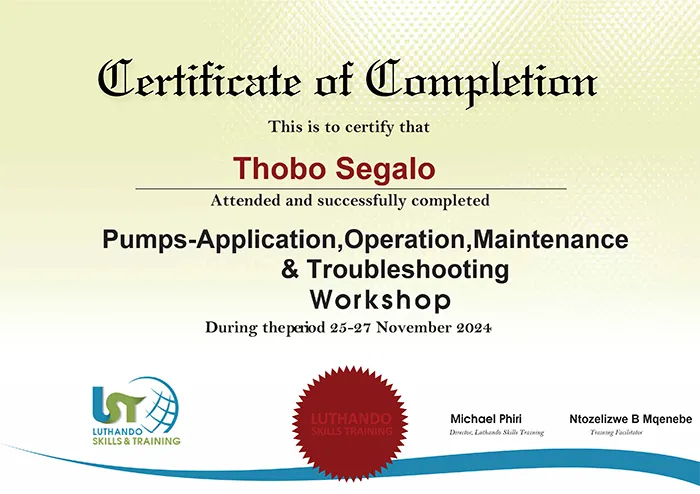Course Description
R 8,999
INTRODUCTION
Lower revenues due to lower commodity prices have placed equipment life-cycle costs under the management spotlight like never before. Maintainers are faced with the challenge to deliver the same levels of equipment safety, reliability and availability with smaller budgets. This Maintenance Engineering training course on Maintenance, Reliability & Asset Management Technology Best Practices introduces the practical tools and practices that organizations need to adopt to drive down their equipment life-cycle costs in practical ways.
This Maintenance Engineering training course emphasizes the most effective strategies, policies, tactics and practices that are needed to ensure the reliability, integrity and durability of the physical assets through their life-cycle.
This Luthando Skill Maintenance, Reliability & Asset Management Technology Best Practices training course will highlight:
- Financial Concepts of Costs, Capital, Profit and Return On Investment
- The Model for Asset Healthcare
- Cost Impact of Equipment Failure and Degradation
- Proactive Practices and Tools to Reduce Maintenance Costs
- Failure Analysis to Focus Cost Reduction Efforts
- Work Management to Improve Resource Efficiency
Objectives
At the end of this training course, you will learn to:
- Understand the concepts of costs, capital, profit and ROI
- Understand the cost impact of unanticipated failure
- Apply proactive policies to reduce future maintenance costs
- Structure and analyze failure data to reduce repetitive failures
- Identify root causes of unanticipated failure costs
- Reduce resource costs through efficient work management practices
Training Methodology
This Maintenance Engineering training course is delivered by means of a combination of instructor-led topic areas and class discussions. This training course is further enhanced by the use of examples and practical exercises that are pre-loaded onto a laptop for each delegate. The templates, examples and exercises are subsequently available to each delegate after the training course as a reference for further study, research or practice. This ensures a high level of knowledge and skill retention.
Organisational Impact
The organization will:
- Gain an understanding of the sources of maintenance costs
- Be able to focus its resources on the events that contribute most to costs
- Gather and structure failure data in a meaningful way
- Eliminate defects that are driving costs
Personal Impact
The participant will be able to:
- Understand the behavior and events that are driving costs
- Understand how poor reliability is a major factor in the cost equation
- Implement a PM program to improve reliability
- Implement root cause analysis to eliminate defects
- Apply best practice work management to ensure early detection and correction of defects
WHO SHOULD ATTEND?
It is highly recommended that maintenance, reliability, engineering and technical support staff including leadership and management to attend this Luthando Skills Maintenance Engineering training course. Also, including:
- Planners
- Supervisors
- Engineers
- Reliability Engineers
- Maintenance Team Leaders and Managers
- Operations Team Leaders and Managers
Course Outline
DAY 1
Equipment Life-cycle Cost Introduction
- Definitions of Reliability, Maintenance & Asset Management
- The Concept of Costs, Capital, Profits and Return On Investment
- The Asset Healthcare Model
- Key Areas of Asset Management
- Open Discussion Sessions
Cost Factors and Causes
- The Real Cost of Unanticipated Failure
- Asset Performance Standards
- The Forms of Asset Failure and Degradation
- The Causes and Nature of Asset Failure and Degradation
- The Effects, Cost and Risks of Asset Degradation
DAY 2
Breaking the Cycle of Degradation and Costs
- Programmed Maintenance
- Programmed Maintenance Intervals
- Condition-based Maintenance Intervals
- Implementing Optimized PM Programs
- Optimizing Spares to Support the Maintenance Program
Cost Reduction through Defect Elimination
- Failure Data Collection and Analysis
- The Impact of Chronic Failures vs. Intermittent Failures
- Focus Improvement through Pareto Analysis
- Quantify losses in Life Cycle Terms
- Rigorous Root Cause Analysis Techniques
- Discussion of Software and Templates to Support Analysis
DAY 3
Work Management converts Strategy to Practice
- Work Identification and Defect Reporting
- The Importance of Backlog
- Planning for Quality and Reliability
- Capacity Planning
- Scheduling for Efficiency
- Work Logistics and Preparation
- Checklists and Practical Aspects Work Quality Control
- Final Discussion and Evaluation



